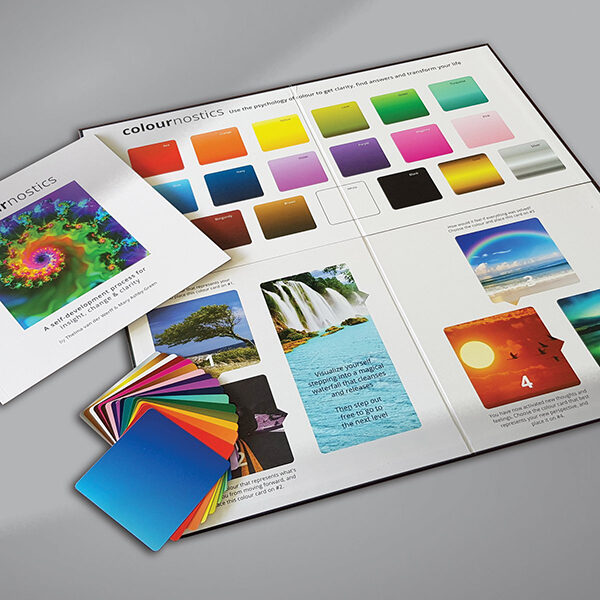
What is Colournostics? How was it created?
Colournostics is a unique self-empowerment tool that combines Neuro-Linguistic Programming (NLP) and colour psychology to enable you to articulate your concerns, identify the barriers that prevent you from overcoming them, visualise how you'd feel if your problems were solved, and empower you with a plan to get you to that point.
The method is based on NLP and the psychology of colour and removes the blockages from your subconscious mind. The development of this method, by Thelma van der Werff and Mary Ashby-Green, took 5 years and was tested with thousands of people, after which it was designed in the colourful ‘process board’. Colournostics has been developed in such a way that your clients (and/or you) can leave behind long-lasting patterns, get clear insight and answers so that a positive change can take place. The Colournostics method can be applied in different ways and you can follow the different modules that suit your way of working and integrate them seamlessly in coaching sessions.
Simple, practical & easy-to-use
Much like a board game in design, Colournostics, in reality, is a platform that enables you to literally lay your problems out on the table in front of you. You then follow the step-by-step process to release the subconscious thoughts, feelings and beliefs that are holding you back, so that you experience a sense of freedom, light-heartedness, and confidence.

WHO USES COLOURNOSTICS?
- Life coaches
- Counsellors
- Business Coaches
- Teachers
- Career Consultants
- Tutors
- Mindfulness teachers
- Yoga teachers
- Web designers
- Massage Therapists
- Beauty Therapists
WHO/ WHAT IT CAN HELP?
- Adults
- Children
- Relationship problems
- Unprocessed trauma
- To lose weight
- Finding solutions
- Achieve goals
- Make a decision


HOW DOES IT WORK?
The process in our toolkit comes from the techniques we use with our clients in our professional practices. It's designed as a simple 5 step process -but don't be fooled, as it is harnessing the power of colour and the precision of NLP. You can use it to solve problems, or set goals for yourself or your clients. These problems can range from relationship issues, challenges at work, worries about something or someone, money concerns, or to improve your performance in exams, or sports.
Once you've established the issue you want to focus on, you go through the five simple questions, relating it to the issue. Rather than replying in words to each question, you instead select one of the 19 colours that seem to best represent your answer. For every colour chosen, you then refer to the 150-page guide book that outlines the meanings of each colour at every stage of the process. Every colour has many hidden meanings, and you won't necessarily identify with all of them. It may just be one 'aha' statement that unlocks deeply buried feelings or beliefs that enables you to move forward to the next part of the process.
How colour can reveal your true issues, and how you can use Colournostics as a coach.
"Colournostics as a tool in my toolbox enriches my ability to find the clues and better understand the interpretation of my client’s pain, distress, discomfort and the imbalance it causes in their life.
Colournostics provides a non-invasive insight while allowing the person to express and bring to light the issue, without having to talk about the issue, if they so choose. Using Colournostics as a dynamic modality allows us, both practitioner and client, to understand and make the first step into a new path of shifts and transformation.
Using Colournostics is a little like detective work, with symptoms and emotions as the clues towards cracking the code and understanding the big picture with its tiny details. It’s a versatile platform for my clients to get to know and explore their deeper levels and find solutions that most suit them. Via the colours, my clients are invited to find and create new paths in the maps of their lives.
My practice as a holistic therapist envelops my attention to the details, the needs, wishes and wants of the person in front of me and lastly the intuition to utilise the tools in the toolbox suitable for the task whatever it may be."
Adva Webber
